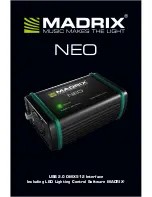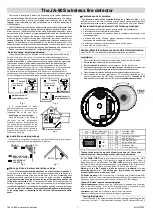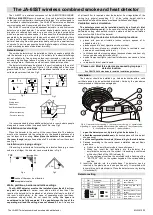
•Reverb Send Level (Controller Number: 91)
This message applies ‘reverb’ to a Part.
•Chorus Send Level (Controller Number: 93)
This message applies ‘chorus’ to a Part.
•Portamento
(Controller Number: 65)
•Portamento Time
(Controller Number: 5)
•Portamento Control (Controller Number: 84)
The portamento function smoothly changes the pitch from the last key pressed to the key
currently being pressed. When portamento is received, the portamento effect is turned
on or off. The speed of the pitch change is set with the portamento time. When porta-
mento control is received, the Source Note number (key pressed last) is specified.
•RPN LSB, RPN MSB (Controller Number: 100, 101)
✩
•Data Entry
(Controller Number: 6, 38)
✩
RPN (Registered Parameter Number) functions are defined within the MIDI standards
and can be used with different devices.
The parameter to be changed is specified with RPN MSB and RPN LSB, and the parame-
ter value is set with the following data entry. The pitch bend sensitivity, master coarse
tune and master fine tune values can be changed with RPN.
* The values changed with RPN will not be initialized even if the tone is changed with a
Program Change, etc.
•NRPN LSB, MSB
(Controller Number: 98, 99)
•Data Entry
(Controller Number: 6, 38)
The device’s characteristic variation parameters can be changed with the NRPN (Non-
Registered Parameter Number). The parameter to be changed is specified in NRPN MSB
and NRPN LSB, and the parameter value is set with the following data entry.
Common NRPN are set in the GS Format, and the variation parameter can be changed
using application software, etc., that is GS Format compatible. The vibrato, cut off fre-
quency, resonance, and envelope values can be changed with NRPN.
* The values changed with NRPN will not be initialized even if the tone is changed with a
Program Change, etc.
* The specifications for NRPNs differ depending on the manufacturer. If an NRPN includ-
ed in song data does not conform to the GS Format, the data will not be played as
expected. To play song data from a different manufacturer, set the “NRPN Reception
Switch” to OFF. When the SCB-55 receives a “GM System ON,” it will automatically
turn the “NRPN Reception Switch” off.
Aftertouch Messages (Channel Pressure
✩
)
Aftertouch refers to additional pressure put on a key after playing a note. The variation
in aftertouch pressure can create changes in the sound produced. There are two types of
aftertouch messages: Channel and Polyphonic. Channel aftertouch affects all note num-
bers on the same MIDI channel. Polyphonic aftertouch affects only individual keys
(note numbers) that are pressed with relatively more force than others.
* Notes will not be affected when an aftertouch message is received while at the factory
settings. Turn aftertouch message reception on with an Exclusive message, and specify
what function aftertouch will control.
11
SCB-55.QX4 01.6.19 8:59 AM Page 11












































